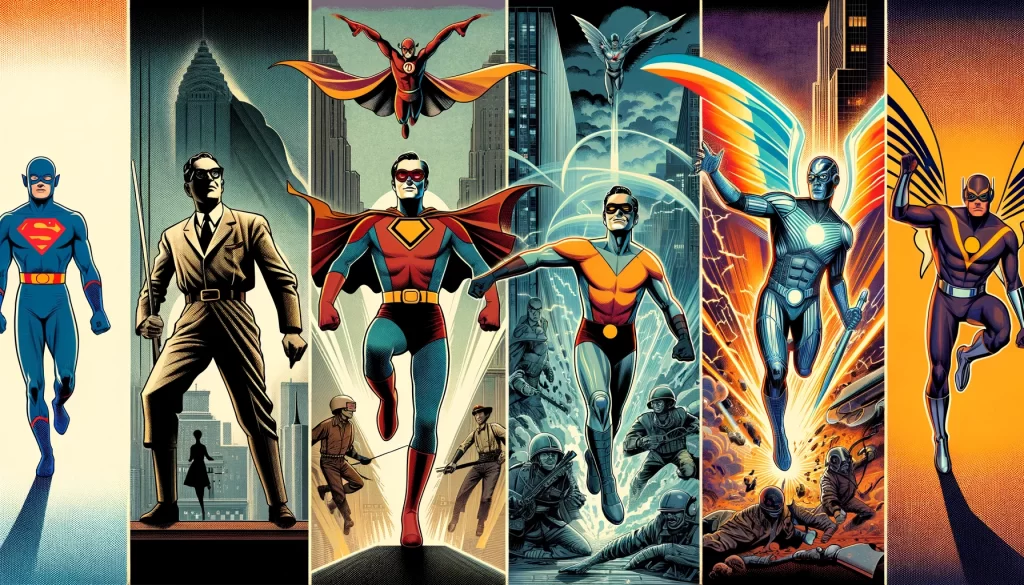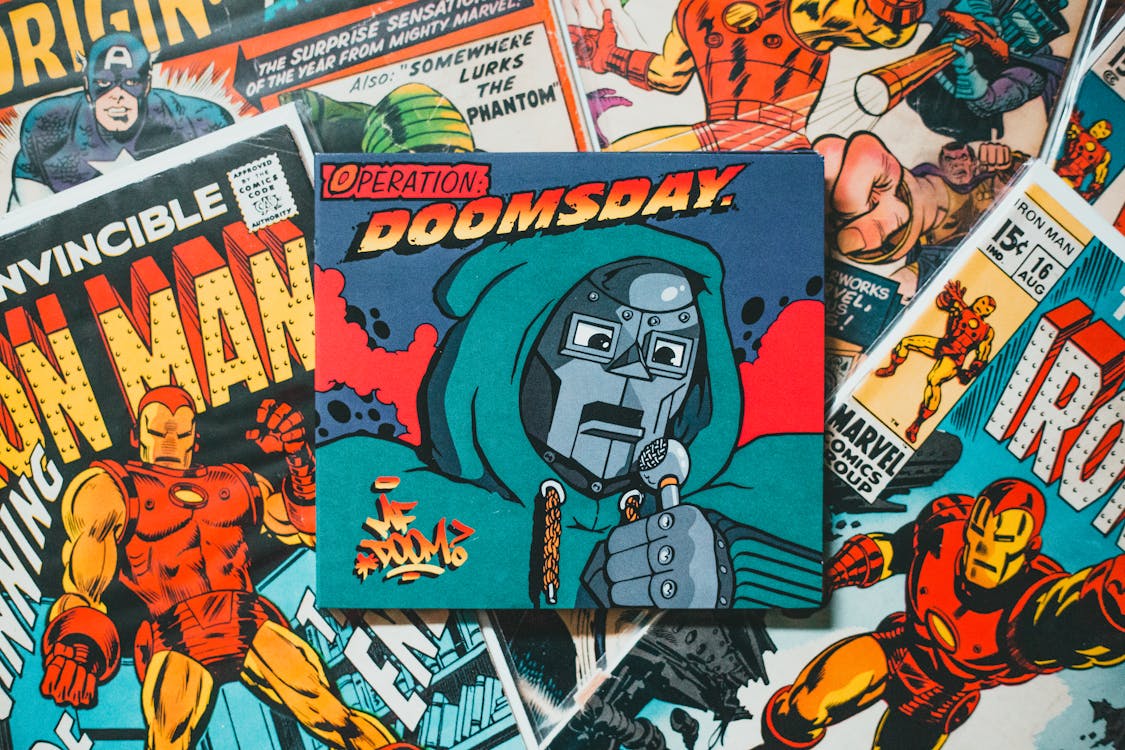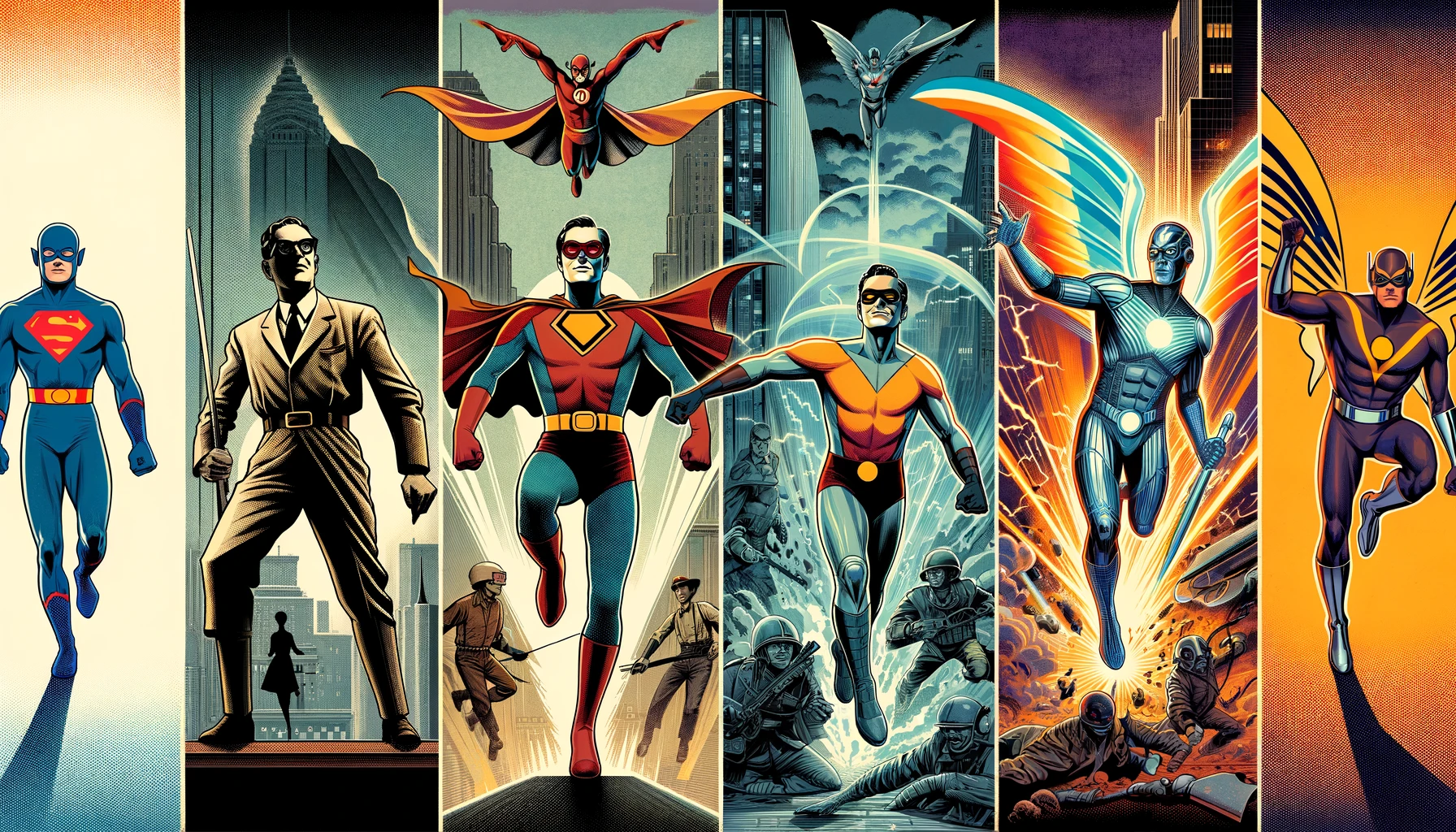
The Evolution of Superheroes: A Journey Through Comic Book History
The story of superheroes and their indelible mark on popular culture is as captivating as the tales woven within the pages of the comic books themselves. From their humble beginnings in the early 20th century to the sprawling cinematic universes of today, superheroes have undergone an incredible transformation, becoming symbols of hope, justice, and the endless battle between good and evil. In this first installment of a three-part series, we embark on a journey through the origins and Golden Age of comic books, a period that saw the birth of iconic characters who continue to inspire and entertain.
The Dawn of Superheroes
The genesis of comic books can be traced back to the early 19th century, with serialized stories and illustrations capturing the imaginations of readers. However, it wasn’t until the late 1930s that the superhero genre, as we recognize it today, truly took flight with the introduction of Superman in Action Comics #1. This moment marked a significant turning point in the history of comic books, laying the foundation for a genre that would dominate the medium for decades to come
Superman’s arrival sparked a wave of creativity and innovation, leading to the debut of other legendary figures such as Batman, who brought a darker, more complex element to the burgeoning genre. These characters, with their extraordinary abilities and moral fortitude, captured the hearts and minds of readers, establishing the archetype of the superhero
The Golden Age of Comics (1938-1950)
The period following Superman’s debut is often referred to as the Golden Age of Comics, a time when the superhero genre flourished and comic books became a staple of American pop culture. During this era, a plethora of superheroes emerged, each with their own unique abilities and backstories. Characters like Wonder Woman, Captain America, and the Flash became household names, embodying the ideals of courage, justice, and perseverance.
The outbreak of World War II had a profound impact on comic books, with superheroes serving as beacons of hope and symbols of American resilience. Characters were often depicted battling Axis powers, reinforcing the notion of good triumphing over evil. This not only provided readers with escapism during a tumultuous period but also bolstered morale and patriotism
The Comics Code Authority and Its Impact
The post-war era saw the rise of the Comics Code Authority (CCA) in 1954, a regulatory body established in response to growing concerns over the content of comic books and their influence on youth. The CCA imposed strict guidelines on publishers, dictating the portrayal of crime, violence, and morality in comic books. While the intentions behind the CCA were to protect younger audiences, its stringent regulations led to a homogenization of content and stifled creativity within the industry
This period of censorship saw many publishers shifting focus away from superheroes, exploring other genres such as romance, westerns, and horror. However, the core appeal of superheroes – the eternal struggle between good and evil, the exploration of identity, and the pursuit of justice – ensured that they would not be sidelined for long. The resilience of the genre speaks to the universal appeal of superheroes, characters who, regardless of the era, continue to resonate with audiences around the world.
As we conclude this exploration of the origins and Golden Age of comic books, it’s clear that the impact of these early years continues to shape the superhero genre. The legacy of characters like Superman and Batman, and the challenges they faced, both on the pages of comic books and in the court of public opinion, highlight the enduring appeal of superheroes. They are not merely characters in a story; they are symbols of our highest aspirations, reflecting the best of what we can be.
https://americanhistory.si.edu/explore/exhibitions/superheroes
The Silver Age of Comics (1956-1970)
The Silver Age is often heralded for its significant contribution to the superhero genre, introducing a new wave of creativity and sophistication in storytelling and character development. This era was kickstarted by the reintroduction of DC Comics’ The Flash in 1956, showcasing an updated version of the character with a new identity and powers. This marked a resurgence in the popularity of superhero comics, leading to the revival and reinvention of other Golden Age heroes and the birth of new icons like Spider-Man, the X-Men, and the Avengers
The Comics Code Authority (CCA), established in the previous era, continued to exert influence over the content of comic books. However, publishers began to find innovative ways to navigate the constraints, focusing on complex characters and moral dilemmas rather than overt violence or adult themes. This period saw the introduction of more dynamic panel layouts, the development of multi-issue story arcs, and a deeper exploration of characters’ alter egos and personal challenges, enriching the superhero narrative beyond simple good-versus-evil dichotomies
The Bronze Age of Comics (1970-1985)
The Bronze Age furthered the trend towards realism and relevance in superhero comics, introducing darker themes and more mature content. This era is characterized by a greater focus on social issues, such as racism, drug abuse, and environmentalism, reflecting the tumultuous times in which these stories were created. Notable moments include the groundbreaking “Green Lantern/Green Arrow” series, which tackled social justice issues head-on, and the death of Gwen Stacy in “The Amazing Spider-Man,” which shattered the illusion of the invulnerable superhero and brought a new level of emotional depth to comic book storytelling
This period also saw the Comics Code Authority relax its guidelines, allowing for the return of horror and supernatural elements to comics. The revival of these genres, coupled with the introduction of antiheroes and more complex villains, provided a richer tapestry for storytelling, where moral ambiguity and character flaws were explored in depth
Cultural Impact and Legacy
The Silver and Bronze Ages were not just significant for the changes they brought to the comic book industry; they also reflected and influenced the broader cultural landscape. Superheroes became vehicles for exploring complex issues, pushing the boundaries of the genre and challenging readers to think critically about the world around them. The legacy of these eras can be seen in the depth and diversity of characters and themes in modern comics, as well as in the continued popularity of superhero stories in movies, TV shows, and other media.
Superheroes during these periods were more than just characters on a page; they became mirrors to society, reflecting the fears, hopes, and struggles of the times. This evolution from simple tales of adventure to complex narratives with real-world relevance demonstrates the power of comic books as a medium for storytelling and social commentary.
https://www.illustrationhistory.org/
The Modern Age of Comics
Beginning in the late 1980s and continuing to the present day, the Modern Age of comics is characterized by a diversification of genres, storytelling techniques, and character representations. This period witnessed the emergence of graphic novels and independent publishers, pushing the boundaries of the superhero narrative and exploring themes previously considered taboo. Iconic works like “The Sandman” by Neil Gaiman and “Saga” by Brian K. Vaughan and Fiona Staples have showcased the potential of comic books as a medium for profound storytelling, blending fantasy, horror, and realism in ways that challenge and enchant readers.
The advent of digital technology has also revolutionized the comic book industry, making it easier than ever for creators to share their work and for fans to access it. Digital platforms and social media have fostered a global community of comic book enthusiasts, while the rise of webcomics and crowdfunding campaigns has democratized the process of comic book creation, allowing more diverse voices to be heard.
Superheroes in Cinema and Beyond
The Modern Age has seen superheroes leap from the page to the screen, with blockbuster movies and television series bringing these beloved characters to a wider audience. The Marvel Cinematic Universe (MCU) and the DC Extended Universe (DCEU) have been instrumental in this transition, crafting interconnected narratives that span multiple films and series. These cinematic universes have not only introduced a new generation to superheroes but have also influenced the direction of comic book storytelling, with movie and TV adaptations often feeding back into the source material.
The influence of superheroes extends beyond entertainment, impacting fashion, gaming, and even academia. Brands like Gem Bet have tapped into the superhero craze, offering themed games that allow fans to engage with their favorite characters in new and exciting ways. Superheroes have become cultural icons, representing ideals of justice, resilience, and heroism in a complex world.
The Future of Superheroes
As we look to the future, it is clear that superheroes will continue to evolve, reflecting and responding to the changing world around us. The push for greater representation and inclusivity in comics shows no signs of slowing down, with more stories centering on female, LGBTQ+, and racially diverse characters. Climate change, technology, and global politics are likely to inspire new narratives, as creators use the superhero genre to explore the challenges and opportunities of the 21st century.
The enduring appeal of superheroes lies in their ability to inspire us, to reflect our highest ideals, and to provide a mirror to our own world, albeit through the lens of fantasy and adventure. As we close this chapter on the history of superheroes, we celebrate not only the characters and creators who have brought them to life but also the fans who continue to support and expand the universe of comic book heroes.
The journey of superheroes from the Golden Age to the Modern Age is a testament to the power of storytelling and imagination. As brands like GemBet and cinematic universes like the MCU and DCEU continue to innovate and expand, the legacy of superheroes is assured, promising new adventures, challenges, and heroes for generations to come.
As we conclude this exploration into the evolution of superheroes, it’s clear that their journey is far from over. The future is bright with possibilities, and we can’t wait to see where it takes us next.
https://www.illustrationhistory.org/
https://americanhistory.si.edu/explore/exhibitions/superheroes
Photo prompted by Juan James









